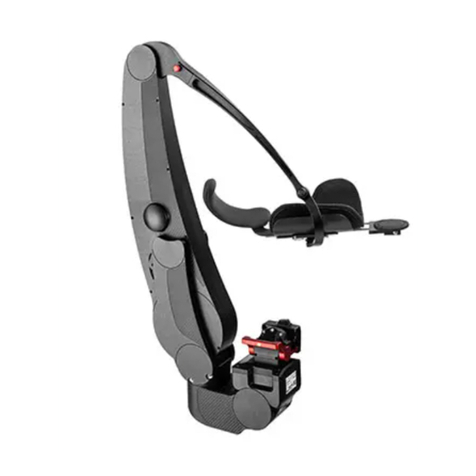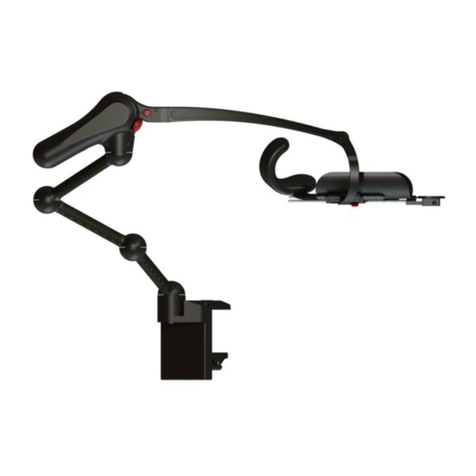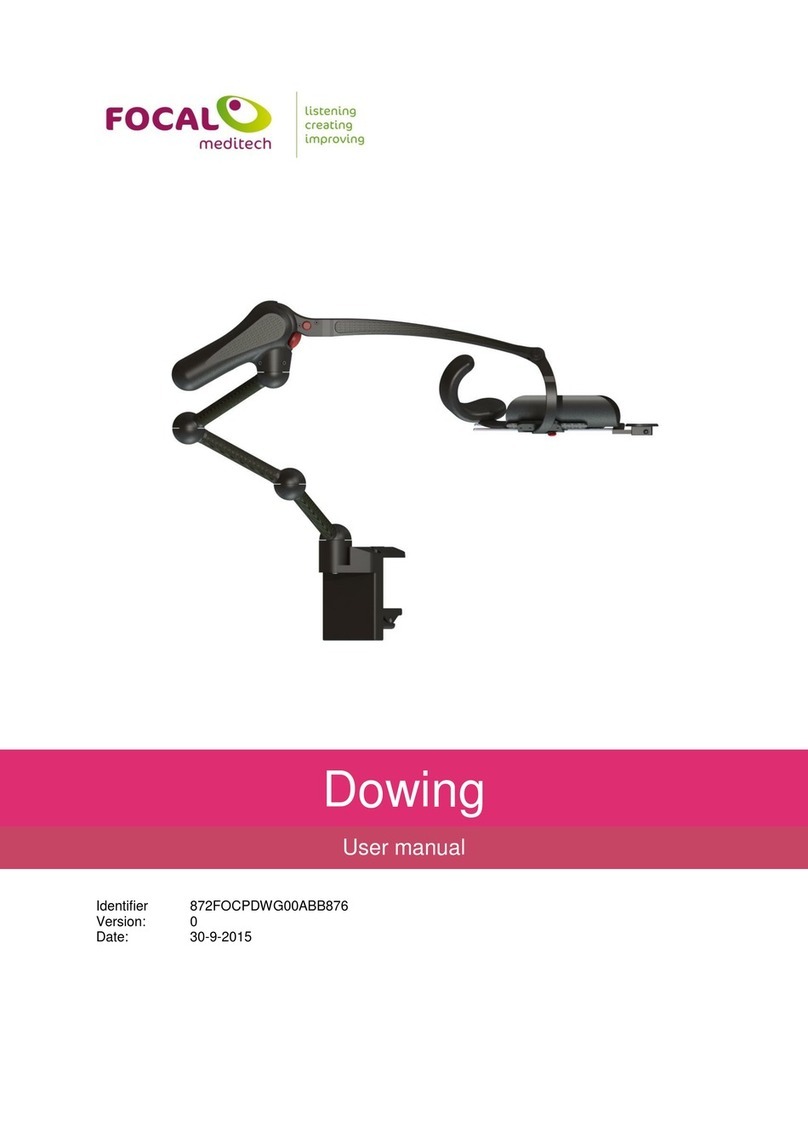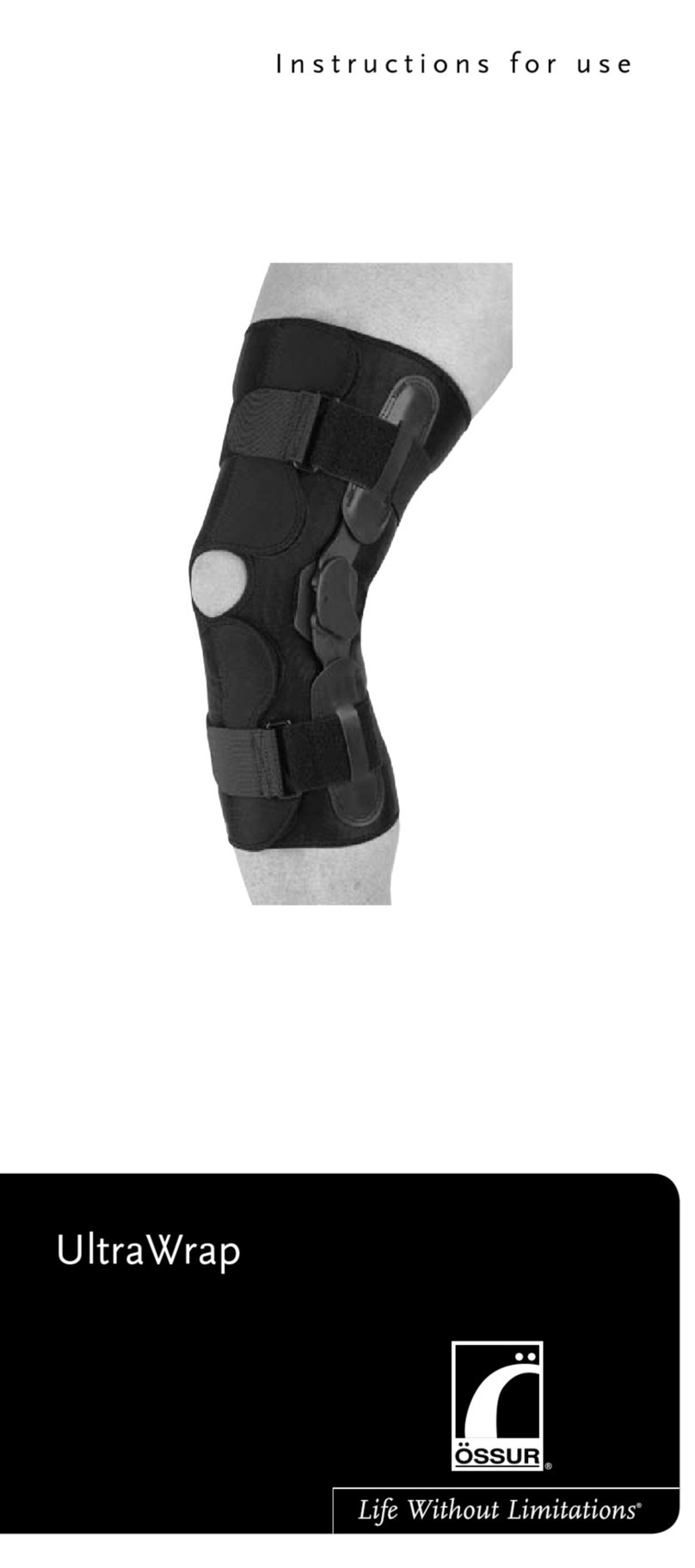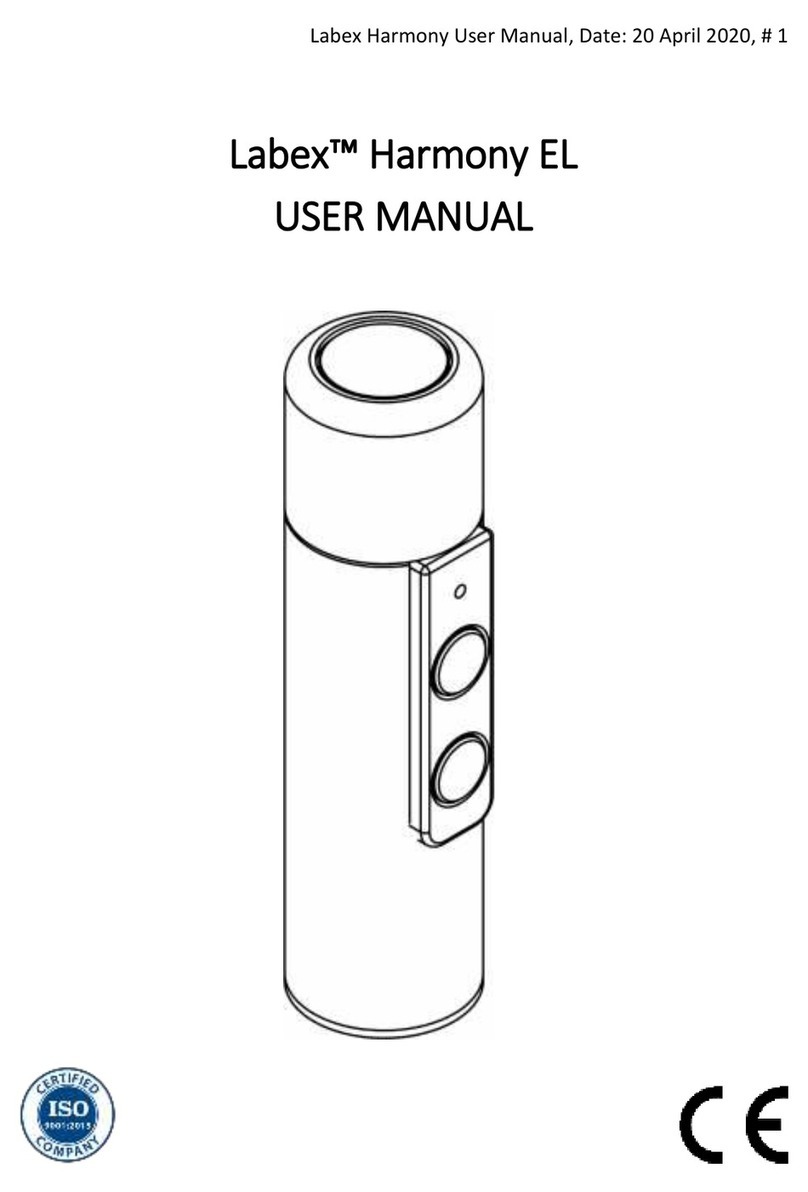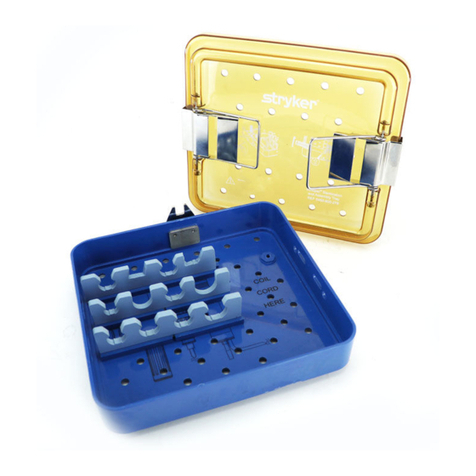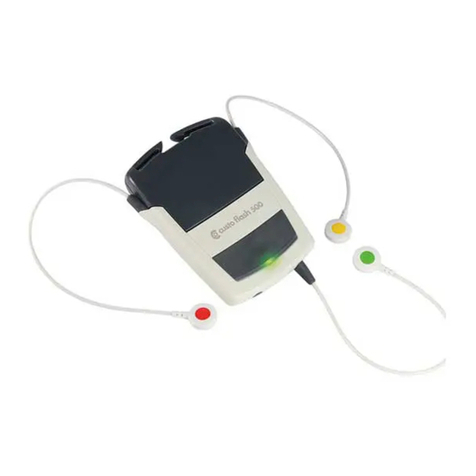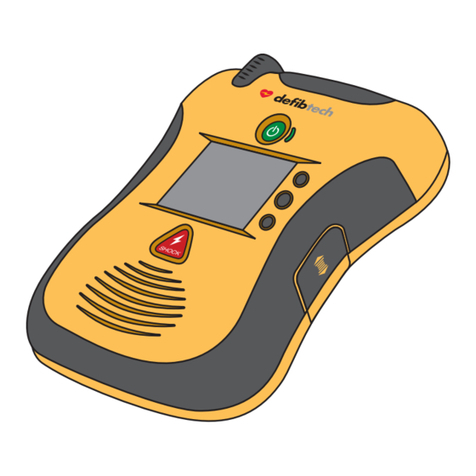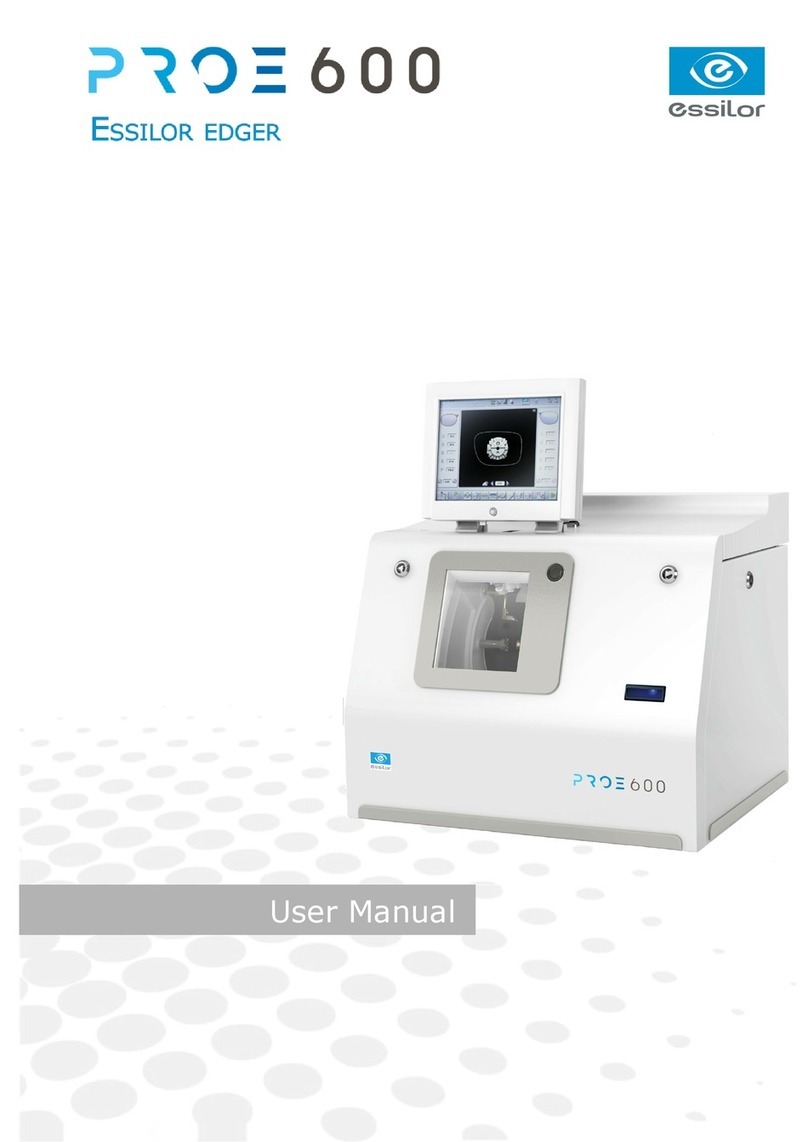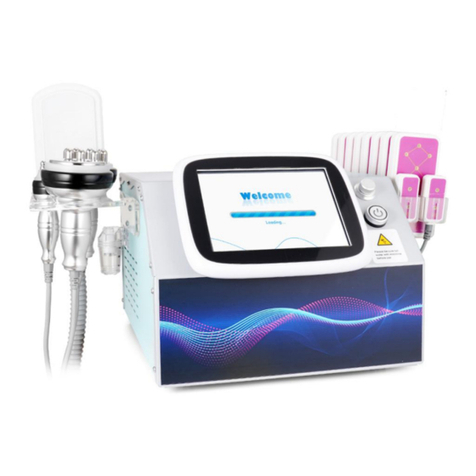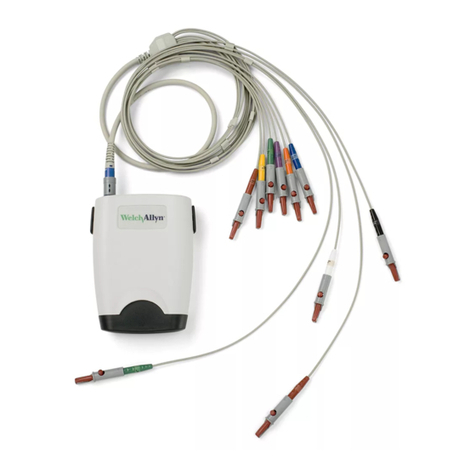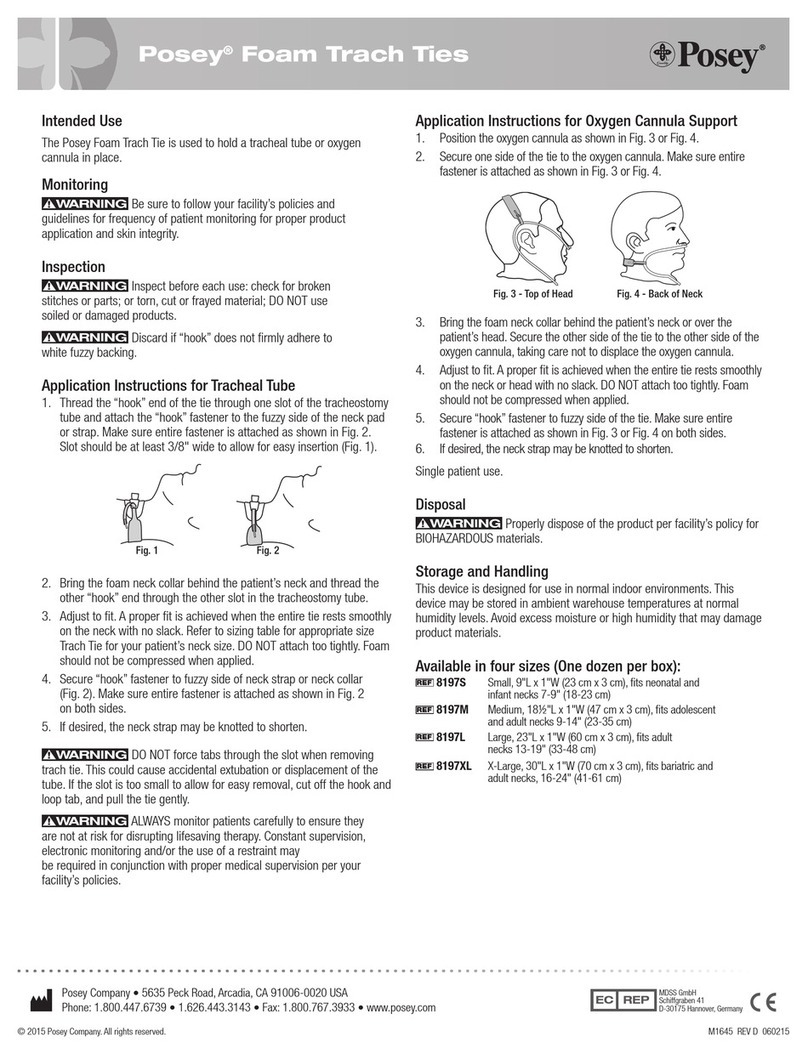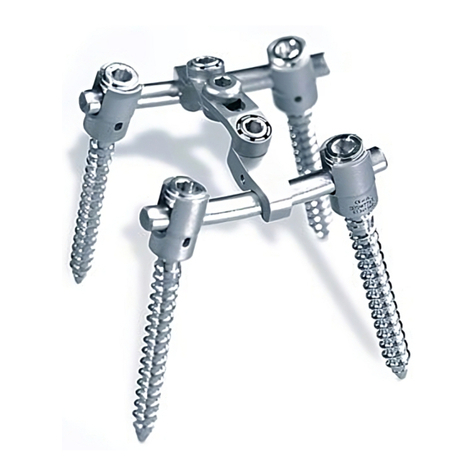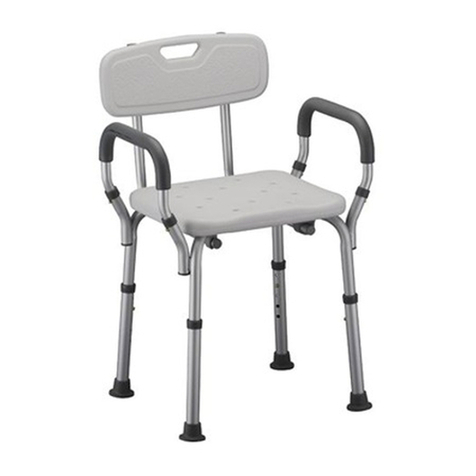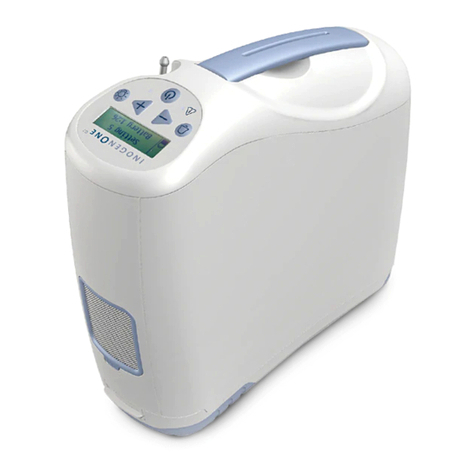Focal Meditech SLING User manual

SLING
DYNAMIC ARM SUPPORT
Manual


1
Contents
V.10.07
INTRODUCTION
FOR WHOM INTENDED
OPERATING PRINCIPLE
PARTS
DESCRIPTION
ASSEMBLY
SETTING
USE
WARNING
MAINTENANCE
CE MARK
WARRANTY
CONTACT INFORMATION
page 2
page 3
page 4
page 6
page 6
page 9
page 9
page 14
page 16
page 16
page 16
page 16
page 20

2
INTRODUCTION
This is the user manual of a dynamic arm support SLING (hereinafter
called SLING) that can be mounted on a wheelchair, chair or a movable
carriage. The SLING is manufactured and supplied by FOCAL Meditech,
a company that specializes in body supports. This guide provides infor-
mation about the article on its implementation and the consequences
of use. The purpose of this information is a sustainable, successful
and effective use of the dynamic arm support. You will know what
to expect from the dynamic arm support, how to set and adjust it (in
general), and the things you need to pay attention to. You will also
find all the information to contact the vendor.
Please read this information carefully: good knowledge of the device
leads to better use and better results. Consider letting other people
in your area read this manual too, for example those who may be
involved in your care!

3
WHOM IS THE SLING INTENDED FOR?
The SLING is intended for all persons whose forearm or hand are not
functioning properly in terms of positioning and use, caused by a
muscular or neurological failure. However, some functionality of the
pectoral girdle and upper arm are required for a proper use of the
device, as well as some usable hand functionality (grasp, manipulate).
The arm support can also be used by healthy people regularly adapt-
ing awkward working postures. The SLING can be used on one or both
sides. Whether one or two dynamic arm supports are used depends
on several factors, including the individual limits and capabilities of
the user and his needs. The user of the SLING can operate in all kinds
of environments: at home, in school, in a workplace, outdoors or in
an institution. The SLING can also be used as a therapeutic device, for
example in physiotherapy with gradually larger getting areas or resis-
tance.
When reading, please note the instructions relating to safe
use. Important passages relating to safety are displayed with
a safety symbol.

4
OPERATING PRINCIPLE OF THE SLING
The dynamic arm support SLING is a set of axes equipped with a
string. The string connects an arm-fitting with a counterweight. The
SLING will always be attached to the 'material' world (chair, wheelchair
or frame). The forearm rests in the arm-fitting, the SLING can now
largely bear the weight of the arm and relieve the pectoral girdle. The
counterweight will allow every movement of the arm and hand against
gravity.
Dynamic arm supports are mainly used by people with limited
strength in the pectoral girdle or arm due to neurological or orthope-
dic state of these areas. By using their own residual capabilities, these
people can move their hands to where it is useful. Reaching, grasp-
ing, moving things and all kinds of everyday activities are now pos-
sible. The SLING works in both the horizontal and the vertical way and
requires no electrical power. A typical feature of the SLING is that the
whole suspension approaches the user’s arm from above. In this way,
unlike other types of arm support, there are no parts under the arm
that may occupy space. Arm support systems of this type are very suit-
able in case the device could come into conflict with objects such as
the working table, joystick, armrest or keyboard. As a result, the SLING
is used by people with their own capabilities and desires.

5
Like all of FOCAL Meditech arm support systems, the device has a very
robust construction and a very slight backlash between the different
axes. The axes are equipped with high quality bearings, so all motions
can be carried out smoothly. The light motion, combined with good fit
and a great adjustability only require very little effort from the user.
The SLING is well adaptable; if required, individual modifications can
be produced.

6
PARTS
DESCRIPTION
Following are the components of the SLING, described from the arm
of the user.
• When using the device, the arm
of the user rests in the arm-fit-
ting. The arm-fitting usually
consists of two components
of leather, namely a wrist- and
elbow piece. If necessary, the
wrist piece can be replaced by a combined wrist/hand piece.
Sometimes only a loose wrist piece is used.
• The combined arm-fitting has a
tilt in the form of a rod (a). This
tilt will set the forearm’s balance.
The rod is attached to a string
with a bobbin (b). This bobbin is
not required if only a loose wrist
piece is used.
• The string runs through a linear
guide (horizontal guide arm)
and various pulleys to the coun-
terweight in the vertical tube.
The linear guide folds out so the
system can be taken during trans-
port or can be stored when not in use.
a
b

7
• The linear guide is attached to
a trolley that moves back and
forth. The function of the trol-
ley is to ensure that the string,
during all forward/backward
movements, remains perpendi-
cular to the linear guide. This will prevent any undesirable forces
in the direction of the user’s forearm.
• The linear guide is attached to
the rotational element. This
rotational element connects
the linear guide to the tube and
allows the linear guide to rotate
towards the tube horizontally.
• At the top of the tube and
bottom of the rotation element
you'll find the components
that can be used to limit the
rotation. There is a metal plug
in the bottom of the rotation
element (a) and metal pins can be placed into drilled holes (b)
at the top of the tube. After applying this, only limited rotations
can be executed by the linear guide. The goal is to prevent the
user from moving into unwanted directions, for example when
passing a door. This limitation is optional.
a
b

8
• Directly below the rotation ele-
ment, on the back of the tube,
there is a pawl spring. This
makes it possible to comple-
tely block all rotations. The faci-
lity is used during transport in a
bus for example, when outside forces can make the linear guide
to swing back and forth. Blocking the rotation is possible in vari-
ous positions. This blocking of rotations is optional.
• The tube contains the counter-
weight (a). This counterweight
may be extra aggravated after
delivery. To do this, there are
three separate weights in the
tube in the form of round, flat
disks. These 'additional weights' (b) can be hung underneath the
counterweight. This feature is also optional.
• The bottom of the tube is placed
into the adjustment unit which is
located at the top of the adapter
for mounting on a chair, wheel-
chair or movable carriage. The
aforementioned adjustment unit
ensures that the tube can always be aligned perpendicularly to
the ground surface. The alignment is provided by three setting
rings. The alignment prevents the arm from undesirable inward
or outward swings under normal circumstances.
a
b

9
ASSEMBLY OF THE SLING
After passing extensive testing and evaluation, FOCAL Meditech or its
representative will place the dynamic arm support on to the chosen
facility. This is individual and accurate business. The transfer of the
SLING to a new facility should also be carried out by FOCAL Meditech
or its representative.
SETTING OF THE SLING
Attention! Before setting the SLING, the seating of the
(wheel) chairs must be placed in the most common active
sitting position.
Horizontal adjustment.
First, the adjustment unit that is mounted on top
of the adapter must be placed horizontally, using
the included level and Allen key. This is done by
loosening the central socket screw inside the
adjustment unit.
The level is now placed on top of the adjustment
unit. Next, using the three adjustment rings, an
exact horizontal position is sought. Now tighten
the central socket screw again. The tube can
now be placed into the adjustment unit. Both
on the adjustment unit and on the tube, there is
an arrow. Both arrows must be opposite of each
other.
This will prevent the linear guide to move into an
area where movement is not desired. The height
of the system can now be set using the button at
the bottom of the adjustment unit.

10
Set rotation limitation.
Now set, if desired, the working range.
Do this by loosening the ring nut at the back
and on top of the tube.
Then use the supplied Allen key (2.5 mm) to
loosen the socket screw you found under the
ring nut. This socket screw used to secure the
rotation mechanism.
Finally, the pawl which can completely block
the rotation element, must be unlocked. Do
this by pulling out and quarter turn the pawl.
The rotation mechanism attached to the linear
guide can now be lifted.

11
On top of the tube, there is a pattern of
holes (a) where small metal pins (b) can be
placed.
At the bottom of the rotation element,
there is a rotation stopper, located between
the two locking pins. This stopper and the
pins limit the rotation of the SLING, to make
sure the arm cannot reach an undesirable
area.
Place the rotation unit with the linear guide back on the tube. Note
that the rotation stop fits between the two locking pins at the top.
Tighten the bolt until it is attached to the rotation element on the
inside. Now turn the bolt three strokes and tighten the lock nut for
security reasons.
Set balance arm.
The desired balance of the forearm can be set by shifting the bobbin
with regard to the rod. Try to find a balance such that the forearm can
be easily tilted up and back in the support elements.
The shifting of the spindle is
done by loosening a socket
screw at the bottom. Slide the
rod into the spindle, and tighten
the socket screw again.
b
a

12
The more the bobbin is placed backwards (towards
the elbow), the easier the arm and hand can be
tilted down.
The more the bobbin is placed forwards (towards
the wrist), the easier the arm and hand can be
tilted up.
The settings should be such that the forearm can
rest on the armrest or on the lap of the user.
Adjust the counterweight.
With the help of the optionally enclosed
additional weights, the counterweight can
be adjusted. When ordered, three additional
weights are included. These additional weights
are located at the bottom of the vertical tube.
To avoid annoying rattle, they are initially
mounted together. In order to adjust the
counter weight, follow the following steps:
1) Fold the linear guide as described
on page (15).
2) Remove the strings from the guide
rollers near the hinge mechanism
(a). This will relocate the counter-
weight to the lowest position of
the tube (b).
a
b

13
3) At the bottom of the tube (through the
opening), the bottom of the counterweight
(a) will now be visible. The three additional
weights (b) were already visible.
4) Rotate the counterweight using a small
screwdriver, until the socket screw of
the counterweight is accessible.
5) The counterweight (a) now covers the
top additional weight (b). This additio-
nal weight can now be attached to the
counterweight by tightening the lower
socket screw (c) in the counterweight.
At this moment all additional weights
are attached to the counterweight.
6) For each additional weight, approxi-
mately 100 grams will be added to the
counterweight. You can now choose
to add one, two or three additional
weights. If you loosen the socket screw
in the
first additional weight
, the other
additional weights will be released and only the first additio-
nal weight will be added. If you loosen the socket screw in the
second additional weight
, the other additional weight will be
released and only the first two additional weights will be added.
If you loosen the socket screw in the
third additional weight
, the
last additional weight will be released and all three additional
weights will be added.
7) Put the strings back on the guide rollers.
8) Spread out the linear guide again as described on page 15. Now
rate the functioning of the adjusted counterweight.
9) If its functioning is not as you wish, repeat steps 1 to 8 to get the
correct weight.
additional weight 1
additional weight 2
additional weight 3
b
a
c

14
USE OF THE SLING
The use of the SLING is determined by the individual needs and
desires of the user and the environment in which he intends to use
the device. The number of activities than can be carried out with the
help of the dynamic arm support is unlimited. In ADL situations, most-
ly activities like eating and drinking independently, activities such as
facial and dental care and applying amenities such as glasses or hear-
ing aids are meant. Common activities include writing, computer use,
doing certain work tasks, household activities, childcare, playing and
hobby activities. However, even with everyday activities such as push-
ing switches and push buttons and operating equipment, the SLING is
very suitable. Frequently, the dynamic arm support is mounted on a
hand-driven or electric wheelchair; mounting on a work chair is also
common.
For everyday use, the following acts are important:
• Removal. The SLING can be easily
removed from the adjustment
unit. This is done by turning the
lever on the unit one stroke.
• Now pull the SLING straight up. The SLING
can now be placed on another facility or
on the included base plate. Placing the
SLING on the base plate is done if the
SLING will not be used for a longer period.

15
• Block. During transport it might be necessary to block the rota-
tion of the linear guide. Do this by pulling out the pawl on top
of the tube and giving it a quarter turn.
Rotate the linear guide slightly, until it
locks. To cancel the blockage, pull the
pawl out again and give this quarter
turn again.
Reduce size
To reduce the SLING’s size (e.g. during storage), the linear guide can be
folded down:
• On top of the linear guide there is a
moving plate with turning knobs. Turn
the front knob one turn, and turn the
back knob until its lower edge protru-
des above the moving plate.
• The moving plate can now be moved
forward.
• Now the linear guide can be folded
down. Folding up will occur in reverse
order; support the end of the linear
guide. Please note that the two but-
tons of the moving plate are fully tigh-
tened.
In case the assistance by the counterweights is no longer sufficient,
please contact FOCAL Meditech or its representative.

16
WARNING
When passing doors, please note that the linear guide won't
stick out of the wheelchair to prevent it from touching the
doorway.
When moving the linear guide in close proximity to other persons,
please avoid striking against them.
MAINTENANCE
The dynamic arm support requires little maintenance. The SLING can
be cleaned using a damp cloth and a non-aggressive detergent.
CE MARK
This product is CE approved and complies with European
guidelines for medical devices.
WARRANTY
GENERAL
These guarantees are part of the General Conditions of FOCAL
Meditech. In the Warranty, the provisions in the General Conditions
are to be respected.
The following warranty terms are based on EU Directive 99/44/EC and
the Dutch Civil Code. The marketing and use of medical devices are
also specified in Directive 93/42/EEC and Royal Order 243 of March
30th, 1995. The resulting rights remain unaffected, as well as the war-
ranty from the dealer to the end user.
Warranty Terms and Conditions may be extended or modified if they
are in writing and in compliance with the law.
Our products are produced and assembled with the utmost care.
However, certain product defects can occur. At request, FOCAL
Meditech will repair all defects, both inside and outside, during the
warranty period. This guarantees that the product life span is not
negatively affected.

17
WARRANTY PROVISIONS
The warranty for this product is according to the following conditions:
Article 1
We will rectify, free of charge and subject to the conditions 2 to 14,
all product defects that are manifest within 24 months from the date
of delivery to the end user. In the case of professional or equivalent
usage, the guarantee is limited to 12 months. The guarantee for used
products is also limited to a period of 12 months.
Article 2
Our guarantee means that the product will be returned in the same
condition it was in before the defect occurred. FOCAL Meditech deci-
des whether defective parts are repaired or replaced. Parts that are
replaced without charge will become our property.
Article 3
The defect must be reported immediately to prevent possible further
damage. The warranty is void if the defect is NOT reported within two
months after determining the defect.
Article 4
To invoke the warranty, the personalized sales receipt or proof of
delivery or purchase must be submitted. In case these are not availa-
ble, other convincing evidence should be submitted.
Article 5
The warranty does NOT cover small deviations from the prescribed
quality, such as, but not exclusively, deviations in measurement or size
which are insignificant for the value, suitability or functionality of the
product.
Article 6
The warranty does not cover damage caused by improper or incondi-
derate use or use for other uses than the product was designed for.

18
Article 7
The warranty does not apply when damage is caused by:
1) Chemical and electro-chemical influence of water or other
liquids.
2) Abnormal environmental conditions in general.
3) Operating conditions which are unsuitable for the product, e.g.
unusual pressures and accelerations.
4) Contact with aggressive substances.
5) Neglect.
6) Any other external cause from outside, for instance bumping or
collision.
Article 8
Warranty does NOT cover malfunction because of damage sustained
during transport and beyond the responsibility of FOCAL Meditech,
installation or assembly by non-qualified persons, poor or inadequate
maintenance, or ignoring the instructions.
Article 9
Warranty is void if the defect was caused by repair or interventions by
third parties that are not qualified or skilled, or if the product is fitted
with accessories or parts that are not original. The warranty also expi-
res if marks or serial numbers have been removed.
Article 10
Repair on site within 14 days will be pursued. However repair on site
can only be required in the case of a minor problem, to be determined
by the supplier. Transportation of the device to a workplace or the
manufacturer may be required.
Article 11
If, during the warranty period, repair of the same defect fails repeated-
ly or the repair costs are disproportionate, an equivalent replacement
is provided in consultation with the user. In case of replacement, we
Other manuals for SLING
1
Table of contents
Other Focal Meditech Medical Equipment manuals

